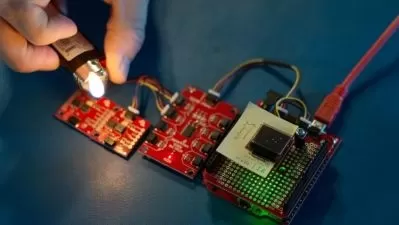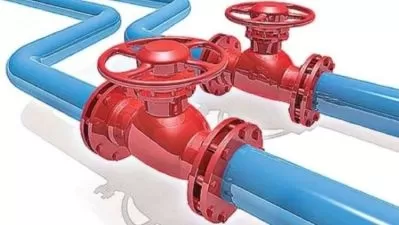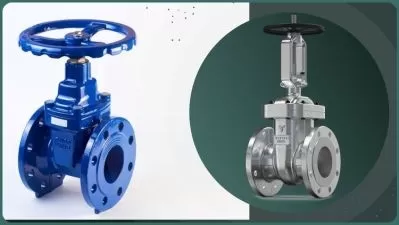Fundamentals of Reliability Engineering
Sandeep Kumar, Quality Gurus Inc.
2:39:14
Description
Gain insight into the basics of reliability engineering. Master the fundamentals for CRE or CMRP certification.
What You'll Learn?
- Basic definitions and principles of reliability theory
- Estimation of Mean Time Between Failures (MTBF) and Mean Time to Failure (MTTF)
- Understanding various types of censored data
- Three phases in the product life: Infant mortality, useful life, and wear out
- An overview of reliability tests such as ALT, HALT, HASS, ESS and Burn-in
- Reliability Block Diagrams (RBDs) and three types of redundancies to improve the system's reliability.
- Calculate the Reliability in the constant failure zone using limited mathematical complexities
Who is this for?
More details
DescriptionFundamentals of Reliability Engineering training introduces the fundamentals of reliability theory and practice. The course will give students an overview of how to apply reliability engineering principles to design systems and processes.
Reliability is the ability of a system or component to perform its intended function under specified conditions for an extended period without failure. A reliable product has a high probability of performing as expected over time. The reliability of a product is directly related to the quality of the product. For that reason, reliability is also called "quality over time."
This course is designed as the first step for students of reliability engineering and persons taking the CRE exam. This course assumes that you do not have any prior knowledge of reliability engineering. This training will provide the knowledge and skills necessary to understand the basics of reliability engineering and its application to systems development.
The course consists of video lectures, readings, and quizzes that help build upon each other so that by the end of the course, you have gained a firm grasp of the topics covered.
Topics Covered:
Section 1. Basic Definitions: We will start this course by understanding the definitions of Quality and Reliability. In this you will also understand why things fail and what are the consequences of failures.
Section 2. Basic Measurements: In this section, you will understand the basic reliability measurements such as the Mean Time to Failure (MTTR) for nonrepairable products and the Mean Time Between Failures (MTBF) for repairable products. In addition, you will learn to calculate the availability and the Mean Time to Repair (MTTR).
Section 3. Censored Data: In real life, the reliability data is not complete. In this section, you will understand various types of censored data and how to deal with them.
Section 4. Failure Patterns: In this section, you will learn the Bathtub Curve in Reliability Engineering. You will understand three phases in the product life: Infant mortality, useful life, and wear out. You will learn to calculate the Hazard Function.
Section 5. Improving Reliability: This section will cover various Reliability tests such as ALT, HALT, HASS, ESS and Burn-in.
Section 6. Reliability Block Diagram: In this section, you will learn to calculate the system reliability based on the reliability of individual components. You will also learn about three types of redundancies to improve the system's reliability.
Section 7. Exponential Distribution: Even though the intent of this course was to teach Reliability without using complex mathematical and statistical formulas. In this section, you will learn to calculate the Reliability in the constant failure zone using the limited mathematical complexities.
Who this course is for:
- Reliability Engineers
- Quality Managers
- Quality Engineers
- Design Engineers
- Manufacturing Engineers
- Industrial Engineers
- People apperaing in the CRE or other reliability exams
Fundamentals of Reliability Engineering training introduces the fundamentals of reliability theory and practice. The course will give students an overview of how to apply reliability engineering principles to design systems and processes.
Reliability is the ability of a system or component to perform its intended function under specified conditions for an extended period without failure. A reliable product has a high probability of performing as expected over time. The reliability of a product is directly related to the quality of the product. For that reason, reliability is also called "quality over time."
This course is designed as the first step for students of reliability engineering and persons taking the CRE exam. This course assumes that you do not have any prior knowledge of reliability engineering. This training will provide the knowledge and skills necessary to understand the basics of reliability engineering and its application to systems development.
The course consists of video lectures, readings, and quizzes that help build upon each other so that by the end of the course, you have gained a firm grasp of the topics covered.
Topics Covered:
Section 1. Basic Definitions: We will start this course by understanding the definitions of Quality and Reliability. In this you will also understand why things fail and what are the consequences of failures.
Section 2. Basic Measurements: In this section, you will understand the basic reliability measurements such as the Mean Time to Failure (MTTR) for nonrepairable products and the Mean Time Between Failures (MTBF) for repairable products. In addition, you will learn to calculate the availability and the Mean Time to Repair (MTTR).
Section 3. Censored Data: In real life, the reliability data is not complete. In this section, you will understand various types of censored data and how to deal with them.
Section 4. Failure Patterns: In this section, you will learn the Bathtub Curve in Reliability Engineering. You will understand three phases in the product life: Infant mortality, useful life, and wear out. You will learn to calculate the Hazard Function.
Section 5. Improving Reliability: This section will cover various Reliability tests such as ALT, HALT, HASS, ESS and Burn-in.
Section 6. Reliability Block Diagram: In this section, you will learn to calculate the system reliability based on the reliability of individual components. You will also learn about three types of redundancies to improve the system's reliability.
Section 7. Exponential Distribution: Even though the intent of this course was to teach Reliability without using complex mathematical and statistical formulas. In this section, you will learn to calculate the Reliability in the constant failure zone using the limited mathematical complexities.
Who this course is for:
- Reliability Engineers
- Quality Managers
- Quality Engineers
- Design Engineers
- Manufacturing Engineers
- Industrial Engineers
- People apperaing in the CRE or other reliability exams
User Reviews
Rating
Sandeep Kumar, Quality Gurus Inc.
Instructor's Courses
Udemy
View courses Udemy- language english
- Training sessions 31
- duration 2:39:14
- English subtitles has
- Release Date 2023/04/10











